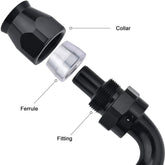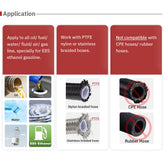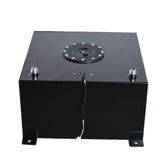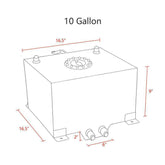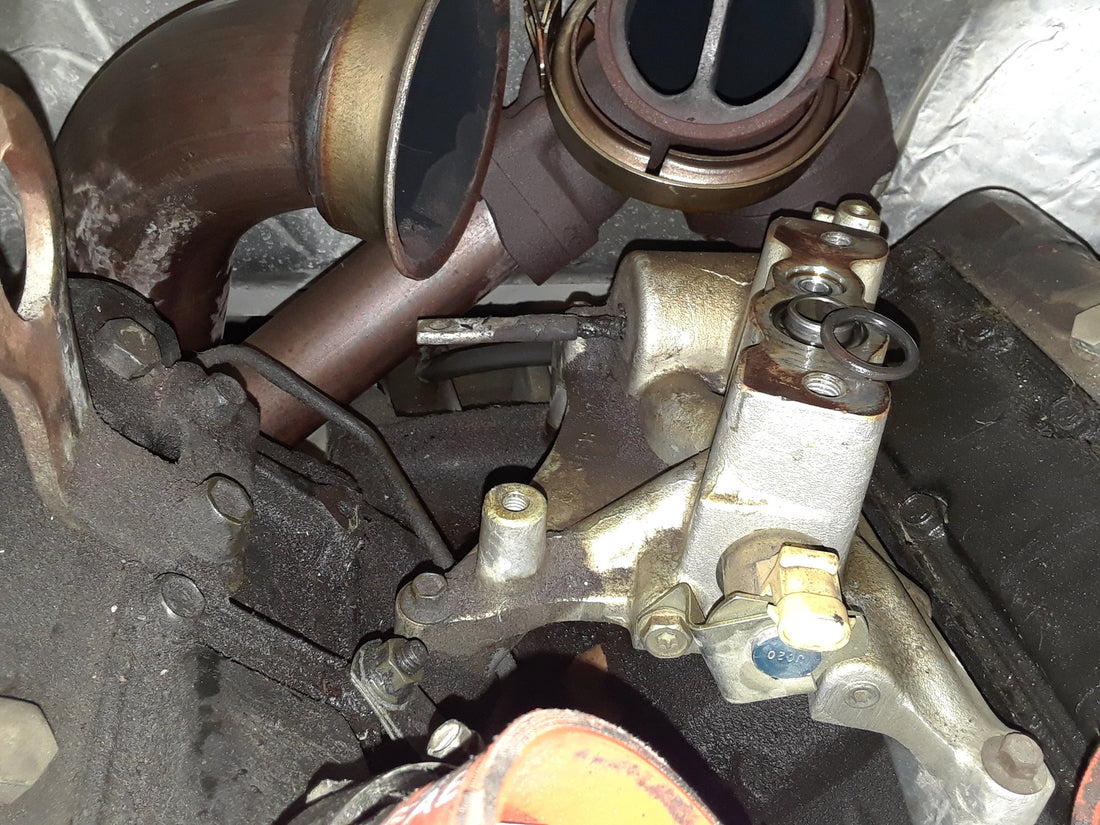A 7.3L Power Stroke's performance can be enhanced by reducing pumping losses both in and out of the engine, as is the case when the exhaust backpressure valve is removed. Even though the area of the valve seems little while it is in the open position, several reports indicate that removing the EBPV will reduce EGTs and enhance turbocharger performance overall.
What is an Exhaust Back Pressure Valve (EBPV)
An essential part of several diesel engines, such as the 7.3 PowerStroke engine, is the exhaust back pressure valve, or EBPV. For the purpose of accelerating engine warm-up and lowering emissions, the EBPV is intended to regulate exhaust flow under specific operating conditions. The EBPV can affect the engine's performance and responsiveness during regular drive, even though it is helpful during cold starts.
Restricting the flow of exhaust through the engine's exhaust system is the main purpose of the EBPV, especially when the engine is cold. In doing so, the EBPV generates back pressure in the exhaust system, which aids in improving emissions control during the early phases of engine running and hastening the warming of the engine coolant. The EBPV is meant to fully open and permit exhaust gasses to pass freely through the exhaust system as soon as the engine achieves operational temperature.
On the other hand, some truck owners and enthusiasts have discovered that the EBPV can actually impair engine performance in general. Because of the limitation on exhaust flow, there may be a rise in back pressure under typical driving circumstances. This can contribute to a drop in engine power, a decrease in fuel efficiency, and a delayed throttle response. Additionally, the EBPV may delay the spooling of the turbocharger, resulting in turbo lag and delayed power delivery.
Reasons for EBPV Delete
Improved Exhaust Flow and Reduced Back Pressure
Exhaust flow is restricted by the EBPV during engine warm-up, which helps to shorten engine warm-up times and lower emissions. But during regular operation, this valve may potentially obstruct the entire exhaust flow, which would raise back pressure. Gases can depart the engine more easily and the exhaust system can operate more effectively if the EBPV is removed.
Enhanced Engine Responsiveness
Throttle responsiveness can be greatly enhanced by removing the EBPV. Less back pressure allows the engine to breathe more easily, which accelerates the vehicle more quickly and responsively. This is especially obvious when towing, since quick power delivery is essential.
Decreased Turbo Lag
Exhaust gases are necessary for turbochargers to spool up and give the engine more power. Turbo lag can result from the EBPV's inability to accelerate the turbo spooling process. Engine performance is enhanced and turbo lag is decreased when the EBPV is removed since it minimizes this delay.
Fuel Efficiency and Power Gains
A Higher Efficiency of Fuel
Improved exhaust flow and decreased back pressure are two ways that the EBPV deletion can increase fuel efficiency. Miles per gallon (MPG) may increase during regular driving since the engine doesn't have to work as hard to discharge exhaust gases when there are less constraints in the exhaust system.
Gains in Power and Enhancements in Performance
Further benefits of the EBPV deletion include observable power increases and enhanced performance in general. Improved airflow allows the engine to create more horsepower and torque, which makes it perfect for off-road excursions, pulling heavy loads, or just having a more thrilling driving experience.
Potential Drawbacks
Impact on the Environment and Emissions
Even though EBPV delete can improve performance, it's important to think about how it might affect emissions. Eliminating the EBPV could result in higher emissions because it contributes to emissions control.
Noise Level and Exhaust Features
The 7.3 Power Stroke engine's exhaust sound could change if the EBPV isn't installed. While some enthusiasts might prefer the stock sound, others could enjoy the deeper, more aggressive exhaust note. Before deleting anything, make sure to review local noise ordinances and personal preferences.
Warranty Issues
It's important to know how the EBPV deletion could impact your car's warranty before doing it. Consulting with a reputable mechanic or dealership is advised as certain changes may void specific elements of the warranty.
EBPV Delete Considerations
It may be contended that the purpose of this system's development was to minimize emissions, given that the maximum combustion efficiency of a diesel engine is achieved only upon reaching operational temperature. Since one of the most significant circumstances for fuel dilution to occur is a cold engine at idle, a further advantage of shorter warm-up durations is less fuel dilution. In any case, it restricts the exhaust stream's path out of the turbine housing, which has a detrimental impact on the efficiency of the turbocharger and engine performance. There exist numerous rationales for individuals who opt to remove the EBPV, such as:
• A detrimental impact on the efficiency of the turbocharger and engine performance (removing EBPV improves performance characteristics and decreases turbocharger lag).
• Increases exhaust gas temperatures (EGT), particularly when performance-enhancing aftermarket equipment is included.
• At the back of the turbocharger, the EBPV regulator and actuator are prone to leaking engine oil; they are difficult to reach and can only be serviced when the turbocharger is removed.
• Rebuilding or fixing the EBPV regulator and actuator is costly.
EBPV Procedure for Delete
Take the following actions to execute the EBPV delete:
Raise the car and place it firmly on jack supports.
Find the exhaust system's EBPV.
Disconnect the electrical connector and remove any mounting bolts.
Remove the EBPV from the exhaust with care.
Implements and Equipment
To complete the delete, you will need some basic automotive equipment, like pliers, sockets, and wrenches.
Safety Measures
Always wear the proper safety gear, such as gloves and eye protection, when working on the car. Furthermore, let the exhaust system and engine cool down before beginning the process.



